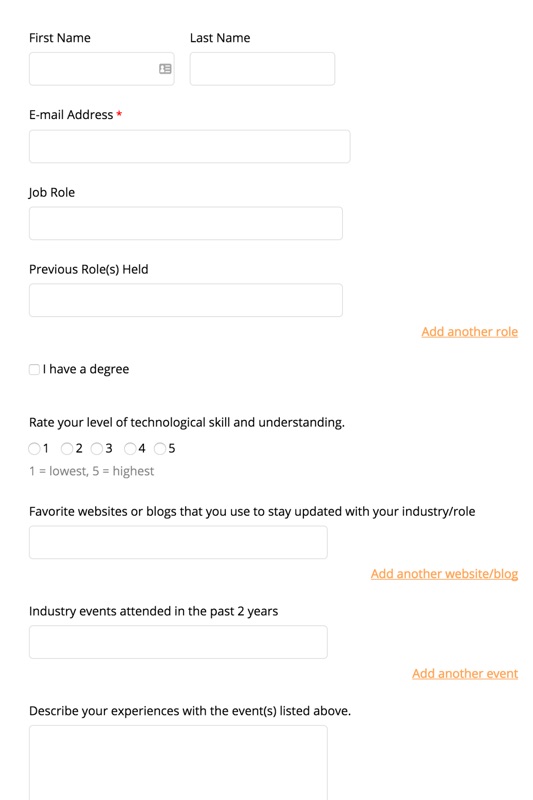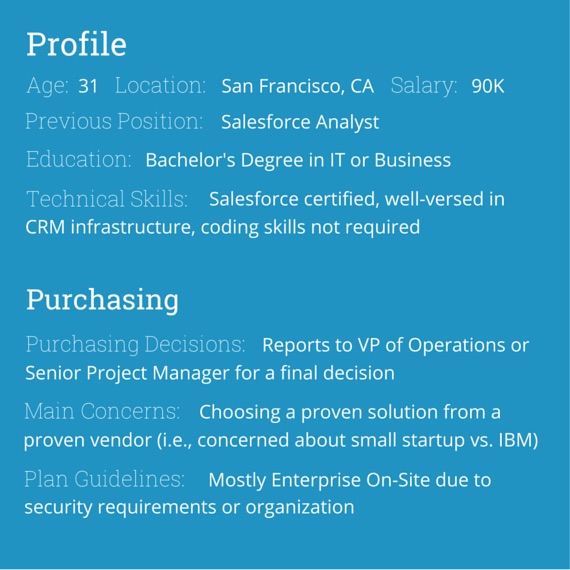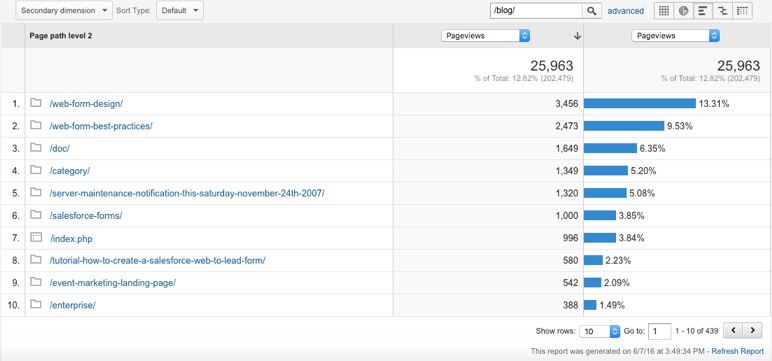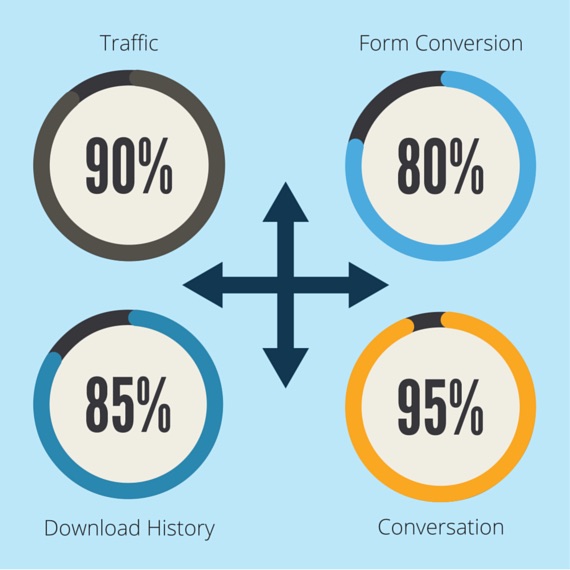We've all been there. Crafting more and more content, but not seeing the return that we imagined after reading all of those “Content is King!” posts that seem to spam our marketing resource sites.
Create more landing pages, post more blogs, share more on social, write an eBook (or two), host a webinar, do some co-marketing-trust me when I say, my team and I have tried it all. And want to know a secret? None of it worked, at least not the way that we needed it to.
That's when we realized that we needed to re-evaluate what content marketing meant to us, and how we could warp that definition to help increase our demand and drive higher-quality leads.
Here's what we found, what worked, and how you can start to make changes that will take your strategies to the same place.
Not All Markets Are Created Equal
This may seem self-explanatory, but it's true. Not all markets are created equal-so why would all strategies be identical? That's where market research comes into play.
When we first began utilizing content marketing strategies, we were honestly just throwing assets at the wall, hoping something would stick. Obviously, that doesn't work well, and it didn't work well for us. That's when we decided to take a step back and actually ask ourselves who is our audience, and what do we expect them to do.
First, who is our audience?
To answer this question, we did one thing: we looked at the data. This is marketing, right? We have to be data-driven in order to be successful, so this was a natural place to begin our content marketing campaign.

As a web form and data collection solution, we had the perfect tools at our disposal to do just that. So, we created some forms-and used data previously collected from pre-existing forms.
We were looking for a few things. First, what types of organizations were reaching out to us organically? Meaning, which types of organizations were naturally finding and pursuing us, without much “effort” on our end. Answering this question showed us our natural strengths, and began to illuminate the markets that we were thriving in, which ultimately showed us the markets that we were failing in as well.
Second, we looked at who from those organizations was our primary contact. As a SaaS organization, it is critical to us to reach team members at certain levels in target organizations. So, by reviewing the titles of the contacts we had acquired, we were able to see how effectively we were reaching the right people, rather than simply focusing on whether we were reaching the right organizations.
With the data in hand, we were able to create target personas. We based these personas on the examples of our target market that we were effectively reaching, as well as those that we knew we needed to begin to reach more effectively. We gave these personas a face, name, background, and title.

Quality over Quantity
Once we understood who we were targeting (and who we needed to be targeting more effectively), we started to talk about the content.
What's funny is that content marketing carries a misnomer that the content is the shining star-but it's not. At least not if you want to create a campaign that actually increases your demand and adds to your bottom line.
The first thing we, as a team, had to do to change the trajectory of our content marketing campaigns was to re-learn the meaning of “content marketing.”
Historically, we (like many others) had seen content marketing as a modge-podge of different content-oriented assets all thrown together to keep our readers or casual visitors busy and engaged. But, we were missing the strategy.
Our content was confusing-and not to mention all over the place. And our user experience and content-assisted conversions were suffering greatly.
This is where the personas came back into play. Armed with tangible understandings of who we were trying to reach, we re-imagined the content that they would each, independently and jointly, find useful and valuable.
We took a look at our analytics and noted the types of topics that were receiving the highest traffic, and then referenced that with our automation platform's data regarding our prospect behaviors.

And then we started chopping. Topics that didn't make sense to our target's agenda, assets that were seeing little to no traffic, and posts that seemed to come and go like ships in the night were all cut. Because why spend time and money creating assets that don't drive demand?
From here, we started building our new strategy, using only the specific verticals and assets that we had identified as valuable to our personified targets.
Revisit the Data
At this point, we had a new strategy, specifically targeting our unique personas, and only utilizing assets that we had determined as valuable to these individuals.
Now, six months ago I would have told you that we were done, and that-in a nutshell- that was how to build a content marketing campaign. But today, we know better. After all of that research, testing, and deployment, it was time to revisit the data.
In order to have any successful campaign across any organizational vertical, you have to revisit the data to truly understand your strategy's effectiveness. In this case, the most telling analytics for most content marketing campaigns are traffic, form conversion, conversation, and download history.

Build From the Foundation
Once we had pulled all of the relevant analytics, we determined which assets were performing best. We did this by reviewing the data points discussed above (traffic, form conversion, download history, and social conversation), and hand picking the assets that stood out above the rest.
For instance, we saw an increase of traffic and social sharing around certain web form tips and best practices. This told us that this topics was especially relevant to our audience, and allowed us to narrow our focus and strategically target this vertical moving forward.
This testing and evaluating process reaffirmed our original findings, and helped us to craft a complete story for our audience, all surrounding the topics, assets, and conversations that they had told us they were interested in.
We found that our enterprise-level customers were highly influenced by these best practices and integration conversations. So, when seeking to create campaigns specific to that personified target, we elevated those topics to create numerous assets that helped draw that consumer into our funnel.
Which, needless to say, led to a higher demand for our content, and ultimately our product.
Conclusion
Here is where we are today. We understand our target, we know what they like, what helps them to make an informed buying decision, and what keeps them engaged with our brand online.
We are constantly re-evaluating our assets, and testing our strategies to ensure that we don't lose track of the foundation for our growth. And most importantly? We aren't afraid to stop it all and start over again-and you shouldn't be either.
By taking your content marketing strategies and ripping them to their core, you will find that you are creating a stronger, more effective foundation of content that will not only increase your demand, but also strengthen your brand online.
So there you have it. That's how our team changed the way we looked at content, and ultimately increased our demand through strategically targeting our consumers. What about you? Has your team tried any data-driven content marketing tactics? I'd love to hear about them below!
About the author: Ashley McAlpin is the Demand Marketing Manager for FormAssembly, a web form and data collection solution. Ashley specializes in content marketing, conversion optimization and demand generation. Join the conversation by following her at @FormAssembly and @McAlpinCreative.
No comments:
Post a Comment